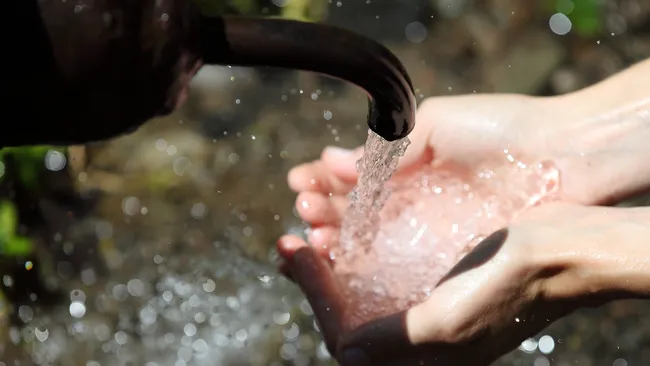MIT’s Bubble-Wrap Innovation: Harvesting Water from Thin Air in the Harshest Places on Earth

In one of the most exciting recent developments in sustainable materials science, researchers at MIT have unveiled a revolutionary material that resembles ordinary bubble wrap — but with an extraordinary ability: extracting safe drinking water directly from the air, even in the unforgiving dryness of Death Valley. This innovation could soon reshape how we think about water accessibility in arid and resource-scarce environments.
High-Tech Bubble Wrap: How It Works
This cutting-edge material is a hydrogel-based structure sandwiched between two panes of glass. It operates through a simple but elegant principle. At night, when temperatures drop, the hydrogel passively absorbs moisture from the air. During the day, the special coating on the glass keeps it cooler than the surrounding environment, promoting condensation. This liquid water then flows down the surface and is captured through a network of small tubes.
Crucially, the hydrogel itself is designed as a domed structure — much like classic bubble wrap — increasing the surface area available for water absorption. This architecture boosts efficiency without the need for any external power source, making it highly suitable for off-grid use.
Tested in the Driest Desert on the Continent
To prove the robustness of their design, the team tested the device for a week in Death Valley — a region known as the driest place in North America and the hottest location on Earth. Despite the harshness of the conditions, the hydrogel panel produced between 57 and 161.5 milliliters (roughly a quarter to two-thirds of a cup) of potable water daily. In more humid climates, its output could be even higher.
Clean and Safe Water Without Electricity
Earlier hydrogel-based water harvesters faced a major drawback: lithium salts used to boost absorption tended to leach into the collected water, rendering it potentially unsafe. This new design circumvents the issue by incorporating glycerol, a salt stabilizer, which brings lithium leakage levels down to a mere 0.06 ppm — well within the safe limit defined by the US Geological Survey.
Such low contamination levels make this device a game-changer for decentralized, clean water production — especially in disaster zones, remote rural areas, or developing regions without reliable infrastructure.
Scalable and Affordable Design
Each hydrogel panel is relatively compact, and the vertical design makes it space-efficient. The MIT team estimates that an array of eight 1-meter by 2-meter panels would be sufficient to meet the drinking water needs of a typical household. The projected cost is also remarkably low — in the U.S., the device could effectively pay for itself in less than a month compared to the cost of bottled water.
Dr. Xuanhe Zhao, a co-author of the study and professor at MIT, envisions scaling the system further: "Now people can build it even larger, or make it into parallel panels, to supply drinking water to people and achieve real impact.”
Implications and Future Directions
This breakthrough, published in the journal Nature Water on June 11, 2025, represents a pivotal shift toward sustainable water solutions. As climate change intensifies and water scarcity becomes an ever-growing global concern, innovations like this could bring real relief to the 2 billion people currently facing challenges in accessing safe drinking water.
Further field trials are planned in resource-constrained environments to test the durability and long-term output of the device under different humidity levels and temperature profiles.
With minimal environmental impact, no reliance on electrical grids, and a low-cost, scalable design, MIT's water-harvesting hydrogel panels may very well become a cornerstone technology in the quest for universal access to clean water.
🔗 Source: LiveScience – MIT’s high-tech 'bubble wrap' turns air into safe drinking water
Sponsored by PWmat (Lonxun Quantum) – a leading developer of GPU-accelerated materials simulation software for cutting-edge quantum, energy, and semiconductor research. Learn more about our solutions at: https://www.pwmat.com/en
📘 Download our latest company brochure to explore our software features, capabilities, and success stories: PWmat PDF Brochure
📞 Phone: +86 400-618-6006
📧 Email: support@pwmat.com

Comments
Post a Comment